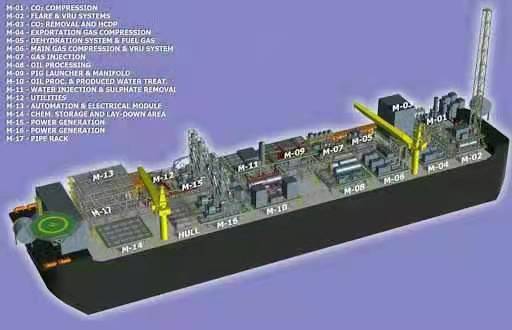Brazilian regulatory standards, also known as NRs, regulate and provide guidance on mandatory procedures related to occupational safety and health.
As more and more construction machinery, production and processing equipment and other mechanical equipment made in China are exported to Brazil, Chinese manufacturers are increasingly concerned about the Brazilian safety regulation nr-12 on mechanical equipment in the workplace. In order to regulate the requirements for Brazilian domestic employers and protect the legitimate rights and interests of workers, the Brazilian Ministry of labor and employment has issued 37 workplace related regulations (regulatory norms), referred to as NRs, of which nr-12 is a safety regulation specifically for mechanical equipment in workplaces. The first edition of nr-12 was issued and implemented in June 1978. After several updates and improvements, the current valid edition of nr-12 was issued and implemented in April 2016. The latest version of nr-13 was revised in September 2017 and officially implemented on June 18, 2018.

List of Brazilian regulatory standards:
NR1 general
NR2 pre inspection NR3 embargo and prohibition
Nr4 occupational health and safety professional service (sesmt)
NR5 internal Accident Prevention Committee (CIPA)
NR6 personal protective equipment
NR6 Annex I - list of personal protective equipment
NR7 occupational health examination plan pcmso
Nr8 building
Nr9 environmental risk prevention plan PPRA
Nr9 Annex I vibration accessories
Nr10 safety of electrical installation and service
Nr10 Annex I - risk and control areas
Nr10 Annex II - training
Nr11 transportation, storage and handling of materials
Nr11 Annex I - Technical Specification for transportation, storage and treatment procedures of marble, granite and other rock blocks
Nr12 safety of machinery and working equipment
Nr12 Annex I - Safety distances and requirements for using light detection
Nr12 Annex II - contents of training plan
Nr12 Annex III - Permanent means of access
Nr12 Annex IV - Glossary
Nr12 Annex V - chain saw
Nr12 Annex VI - bread and candy machine
Nr12 Annex VII - grocery and slaughtering machines
Nr12 annex VIII - pressure equipment
Nr12 annex IX - injection molding machine
Nr12 annex X - shoe making machine
Nr12 annex Xi - agricultural and forestry machinery
Nr12 annex XII - lifts and aerial work platforms
Nr13 boiler and pressure vessel
Nr13 Annex I - personnel training
Nr13 Annex II - self service equipment inspection and certification requirements
Nr14 furnace
Nr15 unhealthy activities and operations
Nr15 Annex I - Limits for continuous or intermittent noise
Nr15 Annex II - impact noise limits
Nr15 Annex III - thermal exposure limits
Nr15 Annex V - ionizing radiation
Nr15 Annex VI - operation under high pressure
Nr15 Annex VII - non ionizing radiation
Nr15 annex VIII - Vibration Environment
Nr15 annex IX - low temperature environment
Nr15 annex X - humidity environment
Nr15 annex Xi - detection limits for chemical reagents and workplaces
Nr15 annex XII - mineral dust limits
Nr15 annex XIII - chemical reagents
Nr15 annex XIV - biological agents
Nr16 hazardous activities and operations
Nr16 Annex I - hazardous activities and operations involving explosives
Nr16 Annex II - hazardous activities and operations involving ionizing radiation or substances
Nr16 Annex III - dangerous activities and actions subject to theft or other types of physical violence in personal property safety professional activities
Nr16 Annex IV - Electrical hazardous activities and operations
Nr16 Annex V - hazardous activities of motorcycles
Nr16 Annex VI - hazardous activities and operations with ionizing radiation or substances
Nr17 Ergonomics
Nr17 Annex I - work of computing operators
Nr17 Annex II - telemarketing work
Nr18 construction industry working conditions and environment
Nr19 explosives
Nr20 flammable and explosive liquid
Nr21 outdoor work
NR22 mining occupational health and safety
Nr23 fire fighting
Nr24 sanitary and comfortable conditions in the workplace
Nr25 industrial waste
Nr26 safety warning signs
Nr28 health and safety of Wharf
Nr30 health and safety of water transportation
Nr31 health and safety in agriculture, animal husbandry, animal husbandry, forestry and aquaculture
Nr32 health and safety in health service work
Nr33 confined space work
Nr34 working conditions and environment of naval building maintenance industry
Nr35 highland work
Nr36 health and safety in slaughterhouses and meat processing and derivatives work
Excerpt from Brazilian nr12 standard
Nr12 - Safety of machinery and work equipment
Revised on April 29th, 2016
general principles
12.1 this regulatory standard (nr12) and its annexes provide technical references, basic principles and protective measures to ensure workers' health and physical health, and stipulate the minimum requirements for the prevention of occupational diseases and accidents in the design stage and the use of mechanical equipment, as well as no defects in all economic activities, including its manufacturing, import, trade, exhibition and operation, It shall not violate all regulations, technical standards and applicable international standards approved by government Decree No. 3214 of June 8th, 1978.
12.1.1 the use stage in this standard includes the transportation, assembly, installation, operation, cleaning, maintenance, overhaul, scrapping and removal of machines and equipment. (amended by regulation No. 857 of June 25th, 2015)
12.2 in addition to specific specified items, this standard covers new equipment and old equipment.
Excerpt from Brazilian nr13 standard
Nr13 - boilers and pressure vessels
13.1.1 this regulatory standard (nr13) stipulates the minimum requirements for the structural integrity of steam boilers, pressure vessels and their connecting pipes in terms of installation, inspection, operation and maintenance, and regulates the health and safety of operating workers.
13.1.2 the employer is responsible for taking specific measures in this nr13
13.2 scope
13.2.1 this NR standard is applicable to the following equipment:
a) All equipment classified as boilers in accordance with Clause 13.4.1.1;
b) For pressure vessels with PV > 8, where p is the maximum operating pressure in kPa and V is the internal volume in m3;
c) Pressure vessels containing class a liquid as specified in item "a" of 13.51.2 have nothing to do with size and PV;
d) Mobile containers for liquids with PV > 8 or class A as specified in item "a" of article 13.5.1.2;
e) Item "a" of geju 13.5.1.2, pipes or piping systems linked to boilers or pressure vessels, which contain class A or class B liquids.
13.2.2 the following equipment shall be submitted to international or national standards and relevant specifications for inspection, and shall be exempted from other requirements in nr13:
a) Transportable containers, pressure containers for transporting products, portable containers for compressed liquids and fire extinguishers; b) Pressure vessels occupied by personnel; c) Pressure vessels as part of liquid rotating machines or substitutes;
d) Catheter;
e) Furnaces and coils for heat exchange;
f) Tanks and storage containers and liquids not included in the design codes and standards related to pressure vessels;
g) According to item "a" of 12.5.1.2, pressure vessels with a diameter less than 150mm that store class b/c/d liquids; h) Heat exchanger with gasket corrugated plate;
i) The steam generator is not included in the pressure vessel specification;
j) Pipes of instrument system with nominal diameter ≤ 12.7mm;
k) Public pipeline system for natural gas and water treatment and rainwater and sewage collection;
In terms of NR standard, pressure vessels are classified according to fluid grade and potential risk:
The fluids in pressure vessels are classified as follows:
Class A:
Still liquid;
Flammable liquid with temperature greater than or equal to 200 ℃; Toxic liquid with allowable limit equal to or less than 20ppm;
Hydrogen;
Acetylene;
Class B:
Flammable liquid with temperature lower than 200 ℃;
Toxic liquid with allowable limit greater than 200ppm; Class C other liquids not mentioned above
If the mixture involves toxicity, flammability and concentration, consider the classification of liquids that pose a great danger to workers and facilities.
Pressure vessels are classified into PV according to potential risks, where p is the maximum operating pressure (MPA) and V is the volume (M3), as shown below:
Group 1 – P × V≥100
Group 2 – 100>P × V≥30
Group 3 – 30>P × V≥2.5
Group 4 – 2.5>P × V≥1
Group 5 - P × V<1













